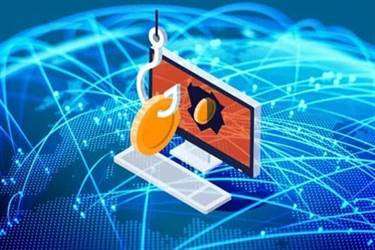Content
ALM is the fruitful combination of the purposes and mechanisms of both business and software engineering. It is important to note that application lifecycle management is carried out through the use of efficient integrated tools. These tools facilitate requirements specification and compliance, product management, actual coding, QA, and release. Application https://globalcloudteam.com/ Lifecycle Management is the term used to describe how a company creates and maintains its applications. ALM, in its broadest sense, comprises the complete management of the software development life cycle and consists of four stages. It is a web-based application that supports complex products with both hardware and software components.

The ability for teams to collaborate ensures that each worker understands the project and its stage. ALM tools allow workers to track strategies, changes, requirements and project status in real time, regardless of their location. ALM tools also prioritize the various team goals and help define the various skill sets needed for different processes. As explained in the next section, the ALM process makes sure that all aspects for all stages of application lifecycle management are explicitly established and managed.
#2. Microsoft’s ALM Suite with Visual Studio
A software application’s development doesn’t end at the initial release. Customer requests, bugs, and upgrades will all need an organization system to track fixes and issues. Ticketing and bug management features turn individual requests into tasks that are then organized with a project management system. These tools may automatically assign a task to the appropriate developer, or they can wait for a developer to pick them up when assigned. These tools help project teams stay on track and compliant through single projects or ensure that product development processes stay consistent across several projects.
- Let’s now consider some stages of application lifecycle management in detail.
- Well, this section will look into a process called Application Lifecycle Management which is a significant part of software development.
- Traditionally, companies that created hardware devices were concerned with the components, assemblies, and parts that comprise their products.
- ALM, or Application Lifecycle Management, is a crucial step in the software development process that is required for the effective creation and upkeep of an application.
- Testers should also be available to provide feedback on the application throughout development.
- The different groups being, development teams, testers, and support teams.
Application lifecycle management, or ALM, is an integrated system of people, processes, and tools that manage the life an application from concept to retirement. ALM is similar to Software Development Lifecycle , but more comprehensive in scope. ALM includes governance, development, maintenance, and decommissioning of software, while SDLC focuses primarily on the development phase.
Application Lifecycle Management is Critical
Users also expect ALM suites to enable customized reporting and versionable, robust backups. The term “application lifecycle management” refers to the group of tools, practices, people, and processes used to manage an application throughout its lifecycle, from inception to end of life. As the name implies, this step of application lifecycle management comprises gathering all kinds of requirements — legal, tech, and financial or general business ones. The stage also involves the actual design of an application in accordance with the conditions stated.

Key areas of ALMS are defined as 1) Governance, 2) Application Development 3) Application management. In case if it is broken , it automatically sends a notification to the developer and project manager. It allows users to prioritize stories and defects using the drag-and-drop function. Allow real-time viewing of artifacts status, which increases transparency and releases predictability.
Importance of Application Lifecycle Management (ALM)
It includes identifying current problems, planning, design, building, and testing the application. This area consists of the traditional developer and app maker roles. This stage includes identifying what is a alm current issues, planning, design, building, testing, deploying, etc. Before this shift, each of the disciplines that made up the overall software process was completely separate.

Adopting an ALM framework has several benefits, including improving decision-making, team engagement, speed and quality, accuracy, etc. It also gives a clear project vision and increases visibility across teams. SMBs to large businesses incorporate the ALM process into their systems to offer applications of the utmost quality while cutting costs and pointless delays. Delivering high-quality software to customers guarantees they are getting the most value for their money. Thus it will assist in building customer engagement and trust, which in turn encourages favorable evaluations in the marketplace and brings in more clients, sales, and profits. For the product to last and succeed, as well as to satisfy the consumer, high-quality software is crucial.
#1. Beginning Application Lifecycle Management
Like every perfectionist there is, companies also want to test the software before calling it open in the market. This stage provides a lucid picture of the entire project and various issues and opportunities can then be anticipated. Requirement analysis is the first and foremost stage in the SDLC process. Lead by the senior team members, inputs are taken from all the stakeholders and domain experts in the industry. These tools also allow you to see code changes within each build.
An ALM is similar to a software development lifecycle but greater in scope. An SDLC framework enables a development team to develop and deploy high quality software. An ALM system is an integrated system that manages the lifecycle of an application from beginning to end, identified as its governance, development, maintenance, and retirement or decommissioning phases. This integration ensures that every team member knows Who, What, When, and Why of any changes made during the development process and there is no last minute surprise causing delivery delays or project failure.
Further reading
Break projects into simple steps, assign tasks to team members, and visualize progress with Gantt charts, Kanban boards, and calendars. Manage resource allocation and forecasting with software that’s easy to launch. Automation and AI features strip away time-consuming admin tasks so you can do the best work of your life. Streamline your practices, align your team, and ensure you hit deadlines and stay on budget. Organizations looking to create and deliver top-quality software within budget prefer to adopt the framework, process, and strategies. Application Life cycle management is a proven methodology widely adopted across industries to plan, design, create, and deliver applications.

